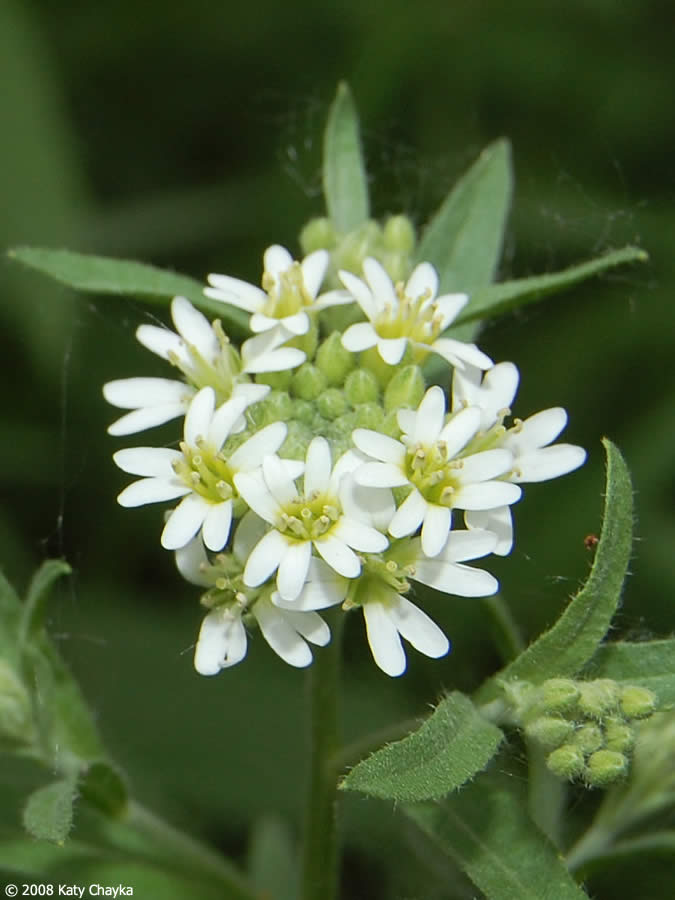Berteroa incana
Inflorescence and fruit of the gray cress ( Berteroa incana )
The gray cress ( Berteroa incana ), and common- gray cress, is a herbaceous plant whose natural range is in Asia and Europe. In North America, she was naturalized. Striking is the graugrünfilzige hair, an adaptation to survive drought.
Description
The gray cress is a one or two perennial herbaceous plant that reaches a height of 20 to 80, in rare cases up to 110 centimeters. It is graugrünfilzig covered with stellate hairs. It is formed a single or a few stems that are upright and frequently branch. The basal leaves are stalked, lanceolate - runs and 3.5 to 8 ( rarely from 2.5 to 10 ) inches long with wavy or ganzrandigem margin. In its heyday, they are usually withered. The growing on the stem leaves are sessile and entire, pointed or blunt.
The sepals are upright and are 2 to 2.5 millimeters long. The petals are white, 5 to 6.5 mm long (rarely from 4 to 8 mm) and deeply divided. The stamens are white. The anthers are elongated and 0.5 to 1 mm long. At the base of the stamens nectar is secreted. As fruit oblong to elliptic, usually 5 to 8.5 mm long and 2.5 to 4 millimeters wide pods are formed.
The gray cress flowers from May to August and the fruits mature from June to September.
The chromosome number is 2n = 16
Distribution and ecology
Its area of distribution extends from Siberia and Kazakhstan, through the Caucasus to Southeast Europe, Central Europe and Northern Europe (Denmark). In North America, she was naturalized. In Central Europe it is in the hill and montane zone on sandy and stony, dry ruderal areas and along roadsides.
In Austria the kind occurs in the Pannonian area very often, otherwise scattered to rare.
Pollinators are hoverflies, bees and butterflies.
System
The gray cress ( Berteroa incana ) is a species in the genus gray cress ( Berteroa ) and thus belongs to the family of cruciferous plants ( Brassicaceae). Within the family it belongs to the tribe Alysseae.
Carl Linnaeus, the type 1753 in the genus of herbs stone ( Alyssum ) under the basionym Alyssum incanum firstdescribed .. Robert Brown as she put Farsetia incana (L.) R.Br. to the genus Farsetia. Augustin de Candolle Pyrame she put 1821 in the genus Berteroa.
The scientific name of the genus Berteroa was awarded in honor of the Italian botanist and physician Luigi Carlo Giuseppe Bertero ( 1789-1831 ). Because of the gray hairs Linnaeus chose the epithet incana, which means " gray means in Latin.
Another name for the gray cress also the name is white ways cress occupied for Silesia.
Use
The extracted from the seeds " cress oil " is used locally as a cooking oil or as technical oil.








